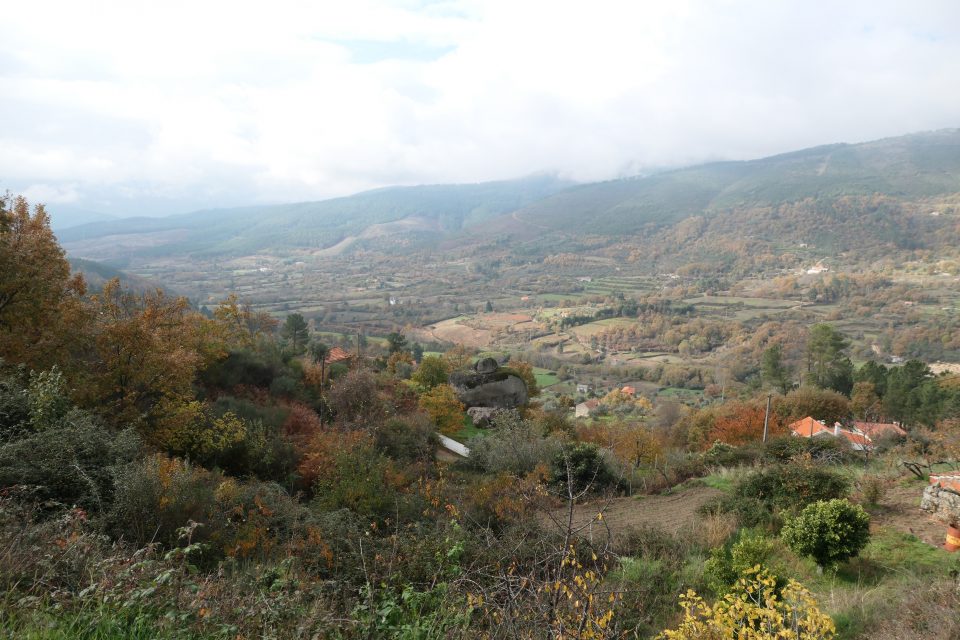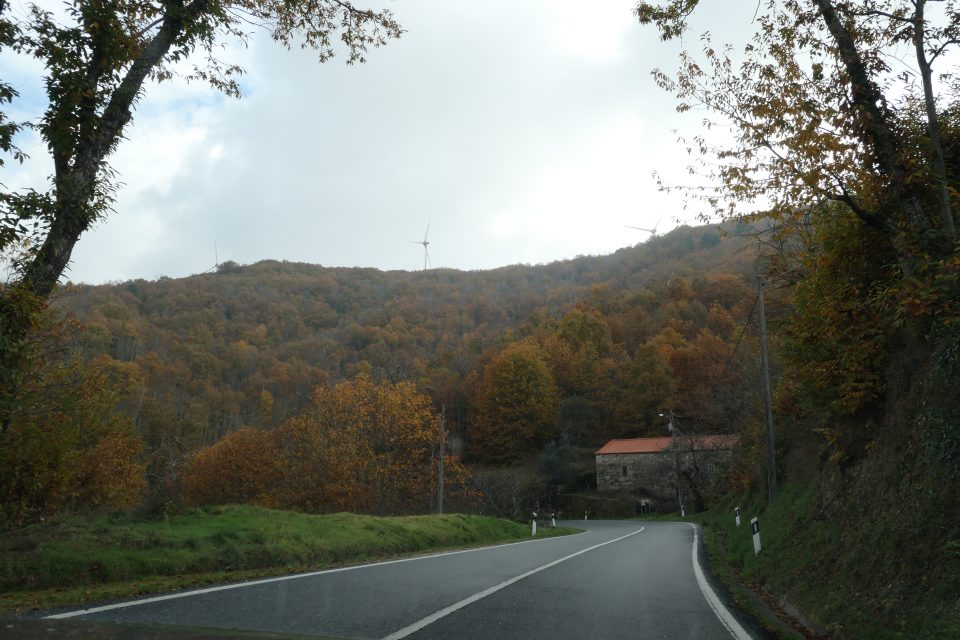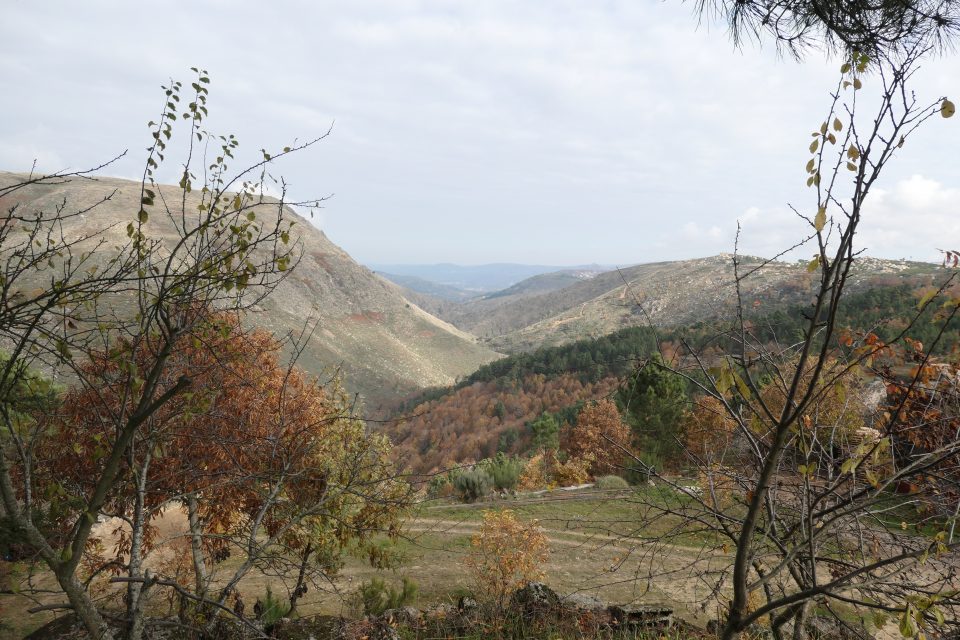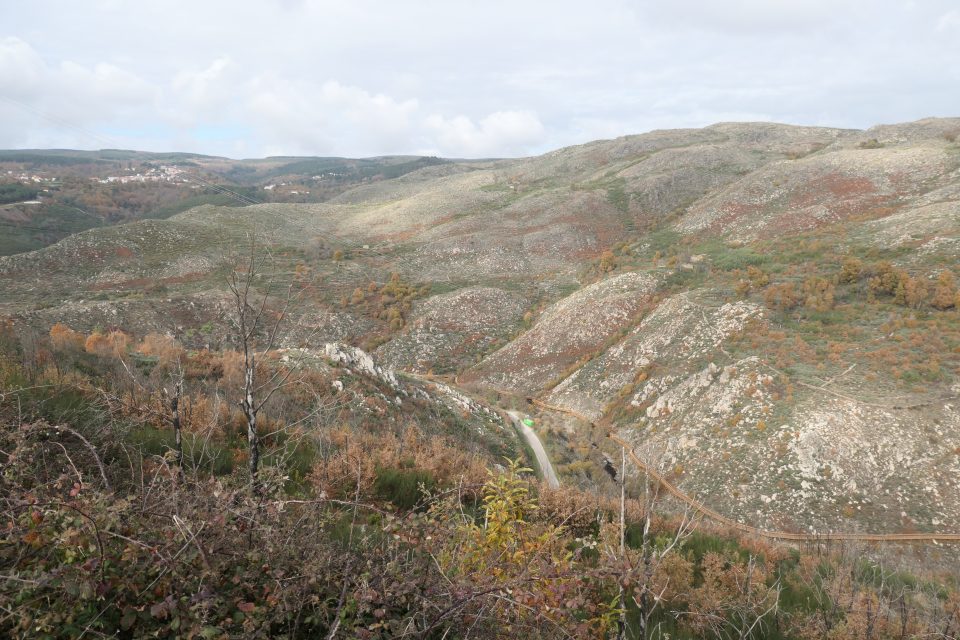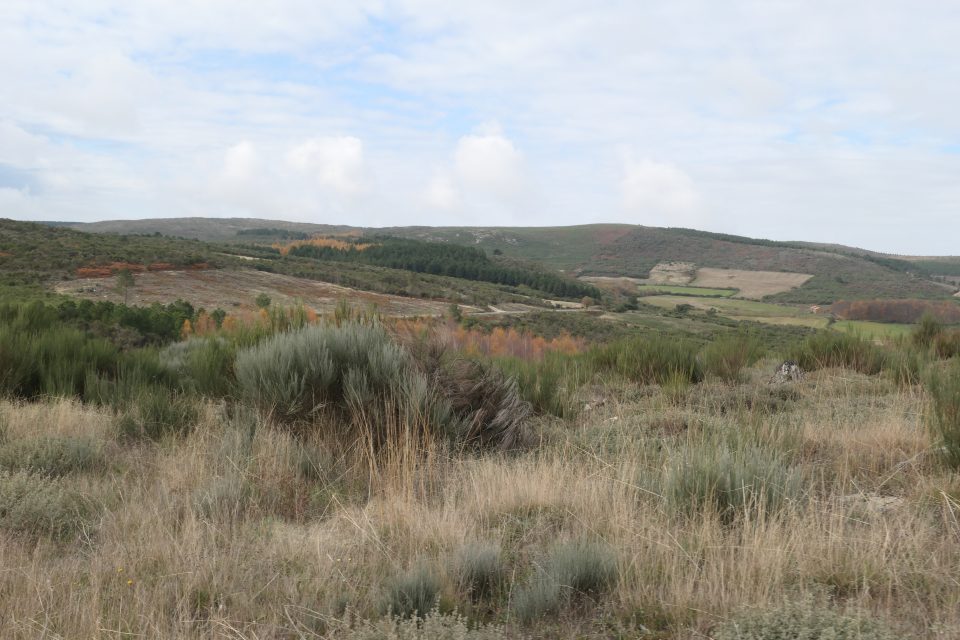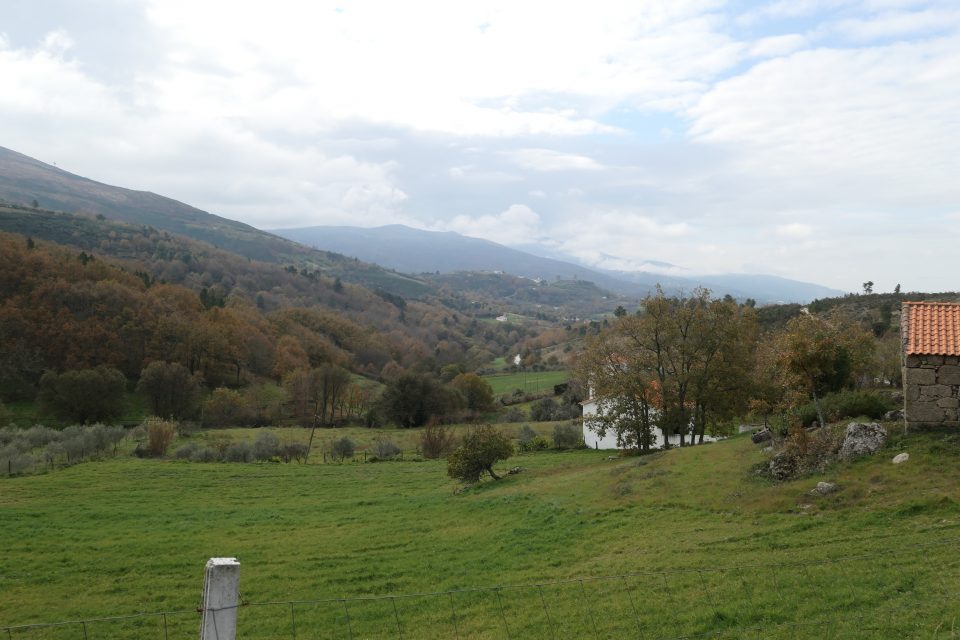NOVEMBER 21, 2021: We have been in Portugal over two weeks, and up to now we were very lucky with the weather – every day was sunny. Being November, that could not last forever, and today we had our first rain. It looks like the rain will be with us on and off for the rest of our trip.
We woke up in Belmonte to wet streets. It must have rained during the night, but now the air was crisp and cloudy. Today we would be crossing the Serra da Estrela, the highest mountain range in Portugal. I was worried that on narrow mountain roads we would have a hard time in the rain. As often happens, there was no need to worry. As we drove into the mountains, it was sunny, the road had two wide lanes, there where guardrails along the side of the mountain, and the driving was easy. The views were spectacular.
All along the mountain road, were scattered houses, most lived-in but some abandoned, and every once in a while, a small village. The fall colors were past their peak, but we still saw many shades of yellow and some of the trees were already bare. We would be visiting some very off-the-beaten-track places today.
Our first destination was Linhares da Beira, a medieval village on the other side of the mountain range. As we reached the top of the mountains, we drove next to a group of the large windmills. These electricity-generating windmills are scattered all over the mountain tops in Portugal. Throughout the country there seems to be hundreds of them. Usually, you see them in the distance, looking very small at the top of the mountain. Now that we were up close, we could appreciate how large each windmill actually is.
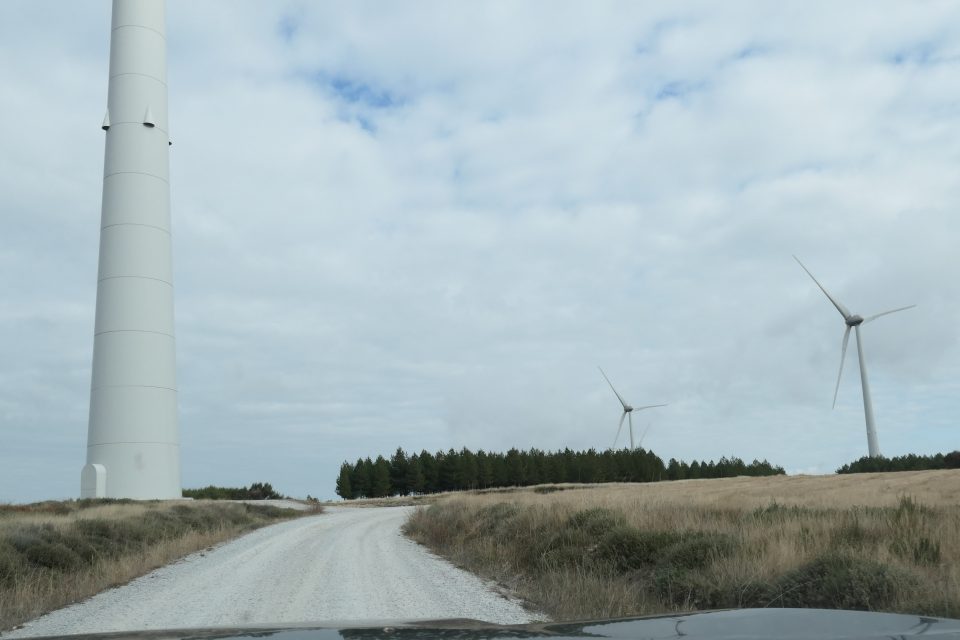
WIndmills up close
As we approached Linhares da Beira, we saw an impressive large castle with two towers at opposite ends on top of a large hill. We were going here for a long-shot. In researching about this village, I came across a photo that was labeled “the house of the Jew”. The photo was on a site of stock photography – a place where people take photos and then sell them online. I did not find much else about the place and had no idea where in the village this house is located and why it is considered the house of the Jew. We decided that we should head first to the tourist information office and see if they can point us in the right direction.
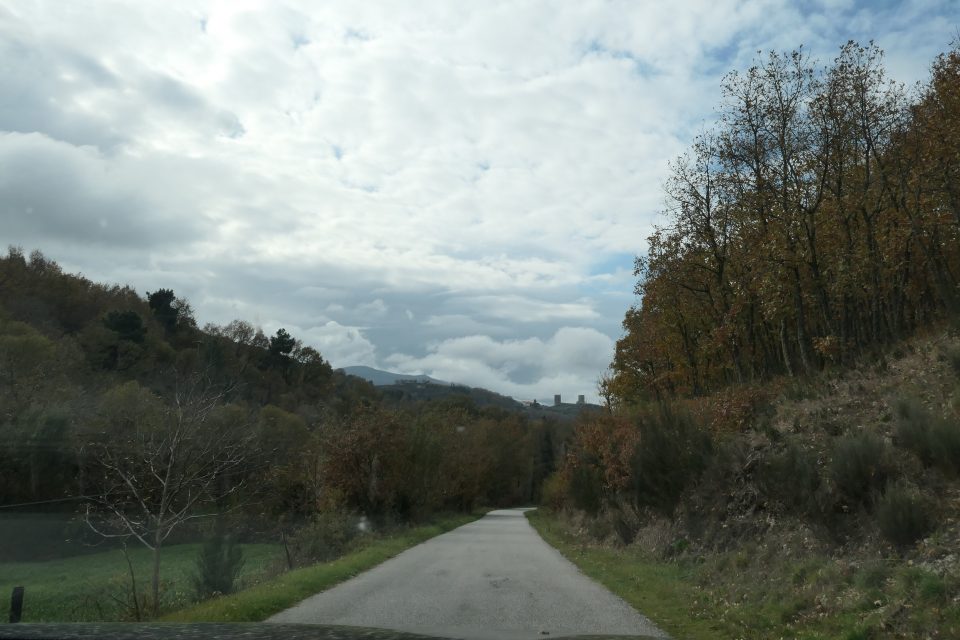
The castle of Linhares da Beira in the distance
Once we were towards the top of the hill, and the road became cobblestone and narrow, we parked and continued on foot. This was a well-preserved village with two tourist offices. We found the first one right away, but it had been closed. The second one, was all the way at the other end of the village.
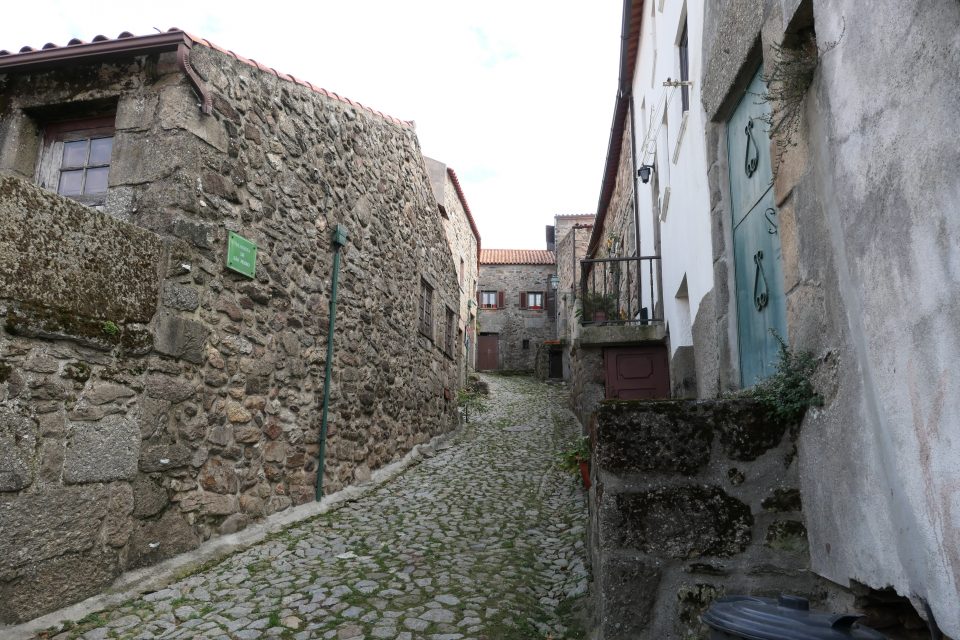
Streets of Linhares da Beira 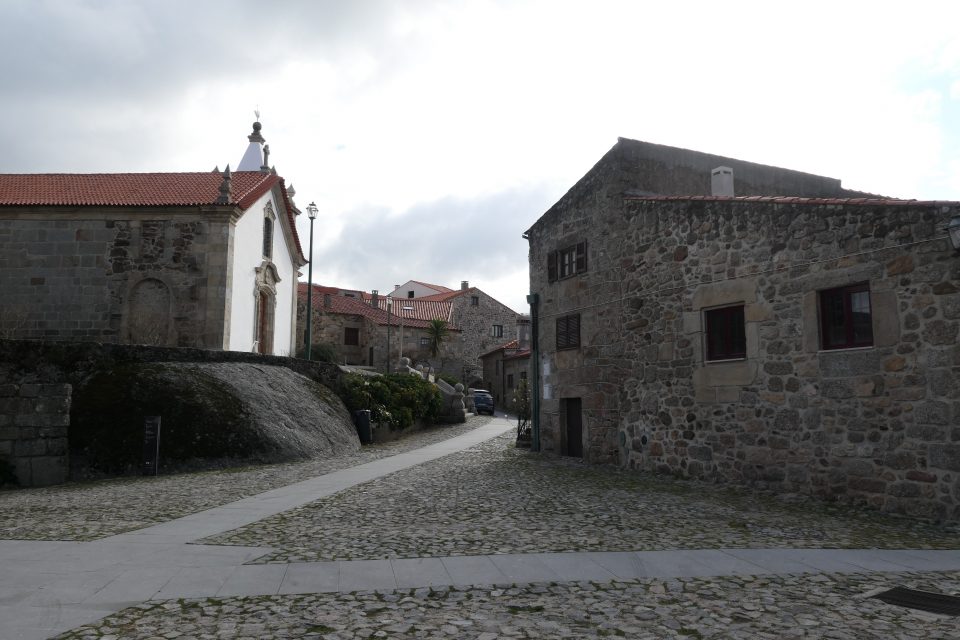
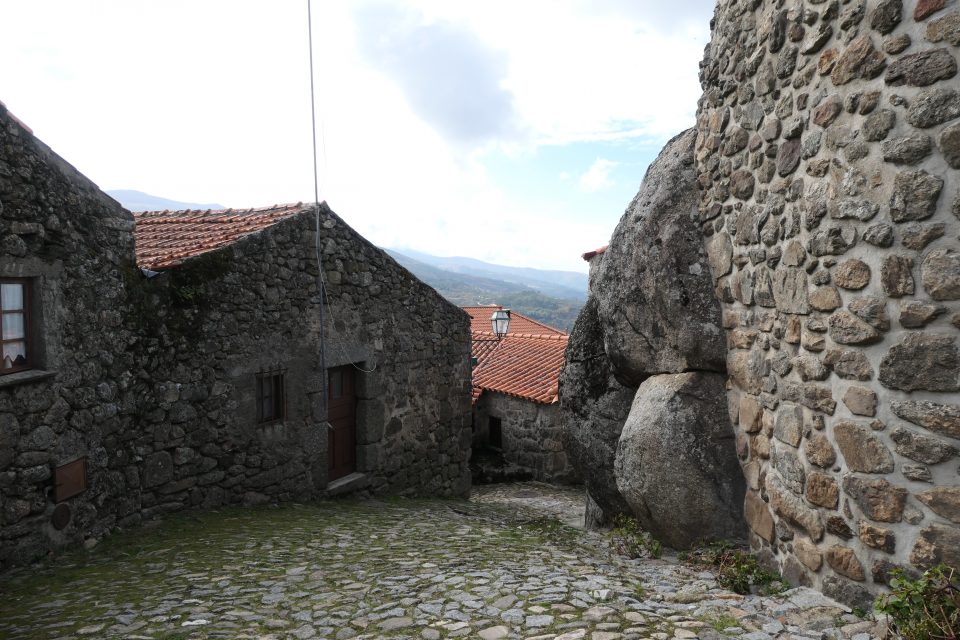
Walking through the village, we stumbled upon the house that was in the photo. Not only was this the house, there was even a sign labeling it as the House of Jew.
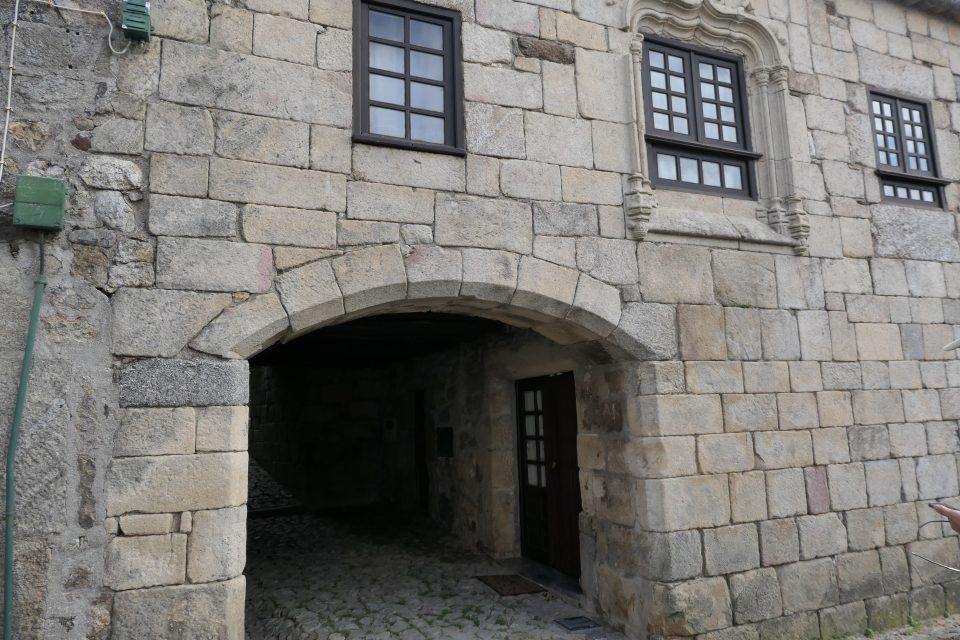
The house of the Jew 
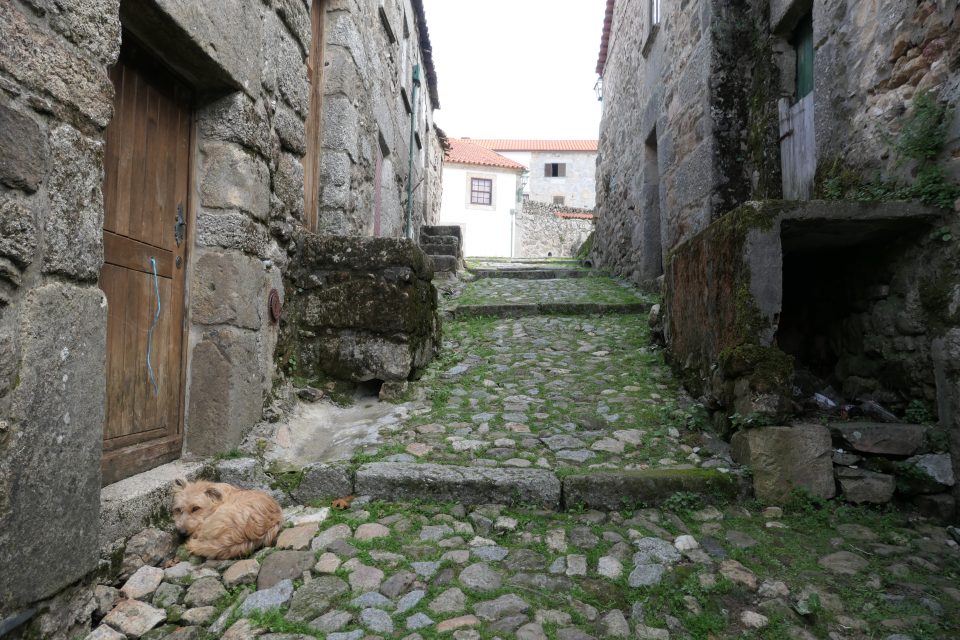
The street of the Jews
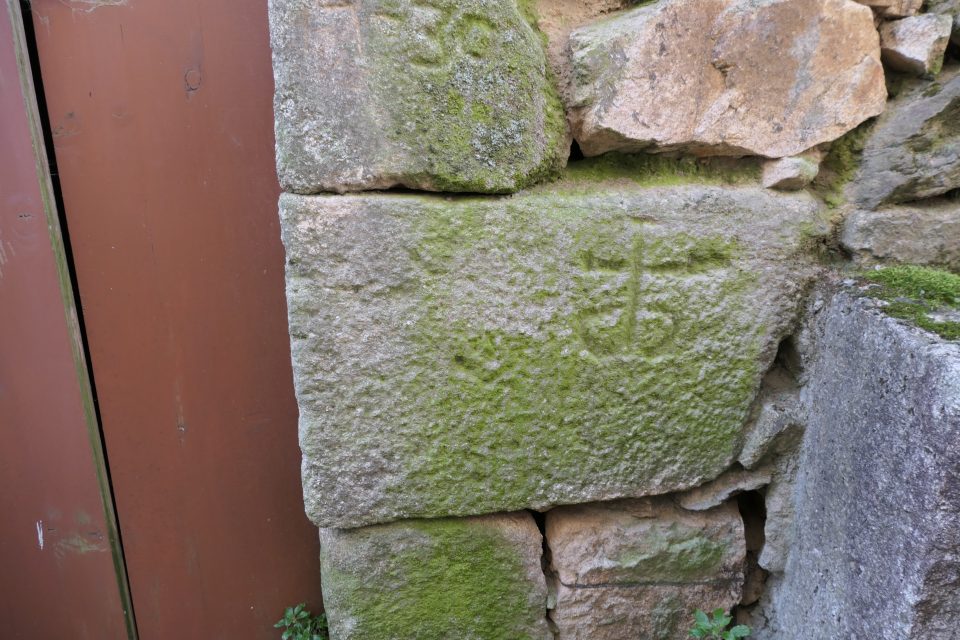
Clear New Christian markings found in the Jewish quarter
From there we continued towards the tourist office, but looking lost, a young woman sitting on her balcony asked where we are going. Once again, the locals have been very helpful at their own initiative. She said there is only one tourist office, and that is the one we had been to. Giving up on that, we headed to the castle. This was a very large, very well-preserved castle with a magnificent view.
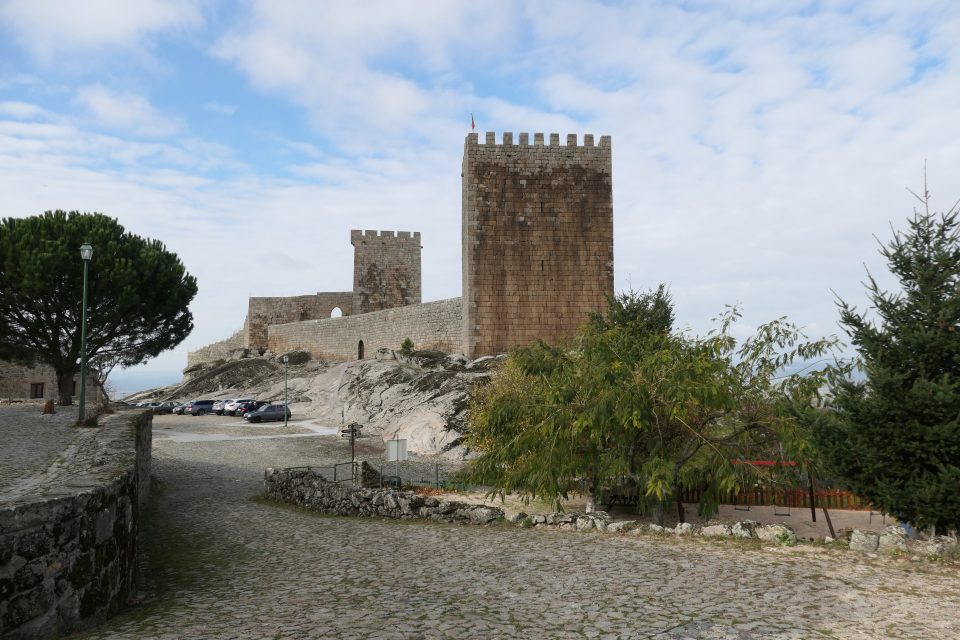
The castle of Linhares da Beira 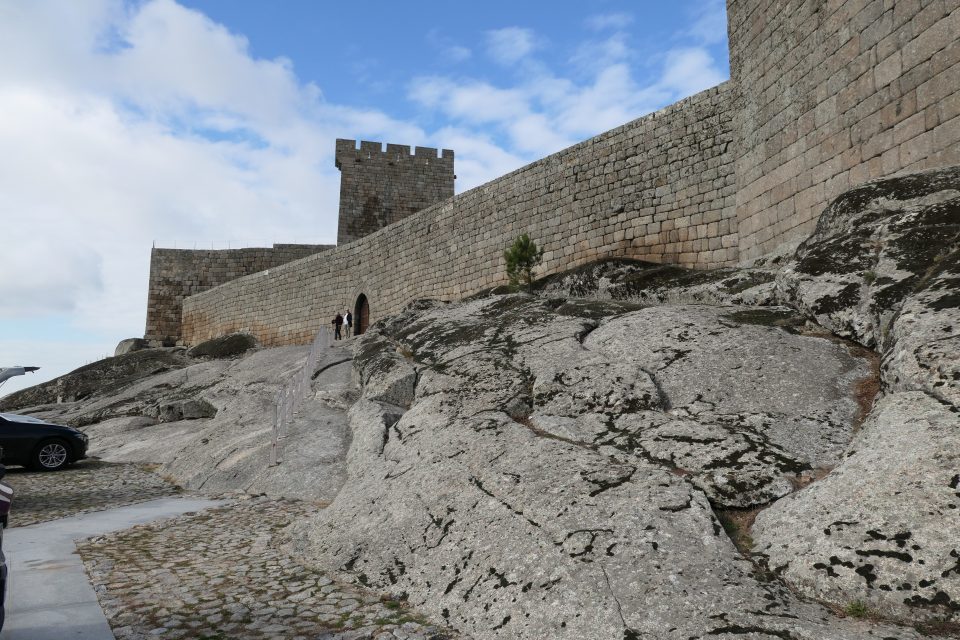
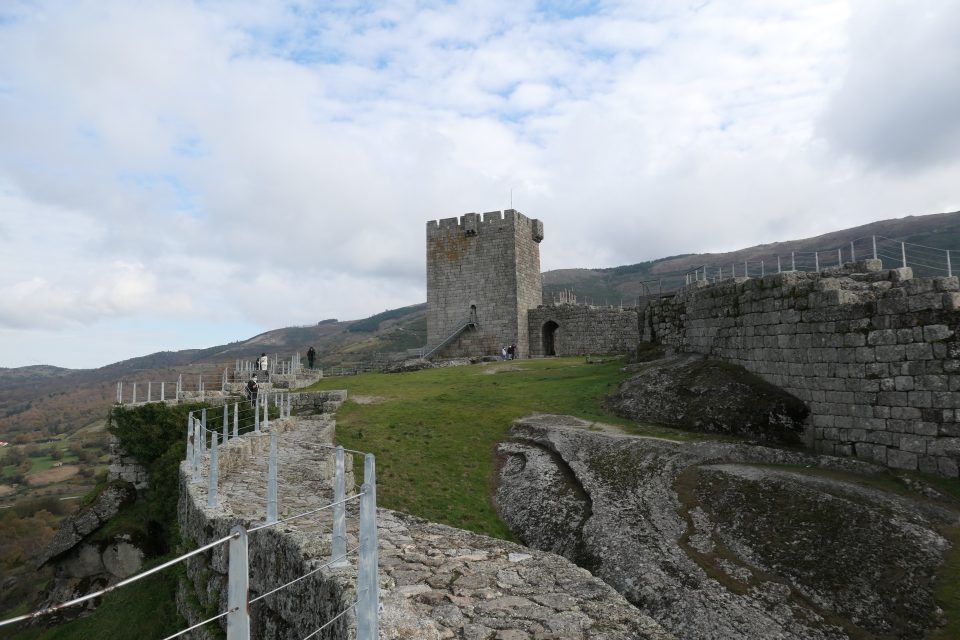
Around the other side of the castle, we found a picnic bench – must be one of the picnic benches with the best scenery ever. The area is known for its para-gliding, and as we were eating our sandwiches we watched two para-gliders complete their journey. We were very thankful that the predicted rain had not yet started.

Picnic with a view 

Little dot in the sky is a paraglider
We continued driving in the mountains towards Folgosinho, another small village (population 500). Here too, I had some photos from the internet (precisely four of them) of houses with an indication that Jews lived here. The town is so small, that the streets are not named in Google Maps. There is no tourist office listed. We would just need to wander around, playing detective and look for a match with the photos we had.
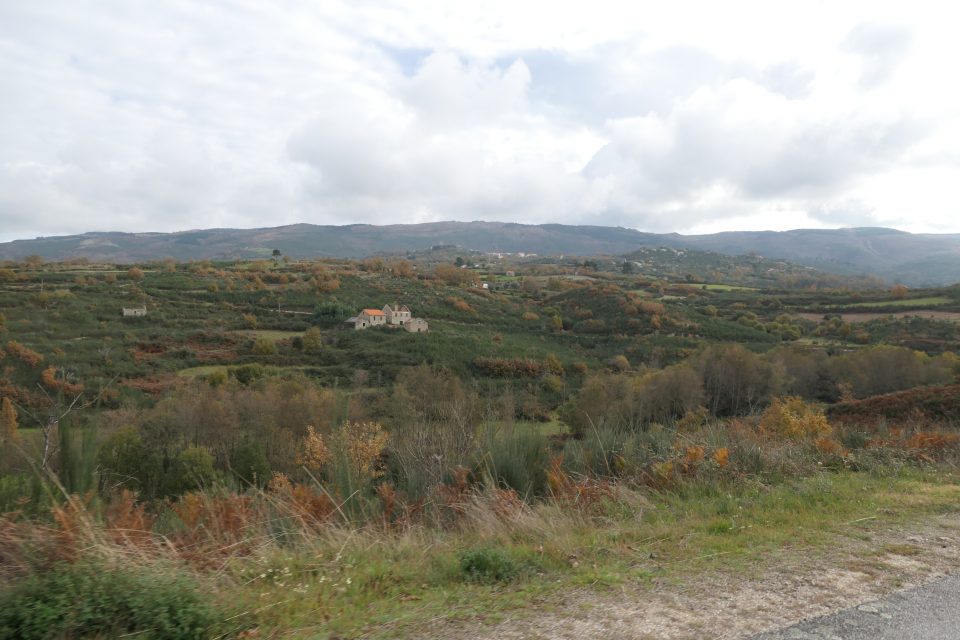
Driving towards Folgosinho 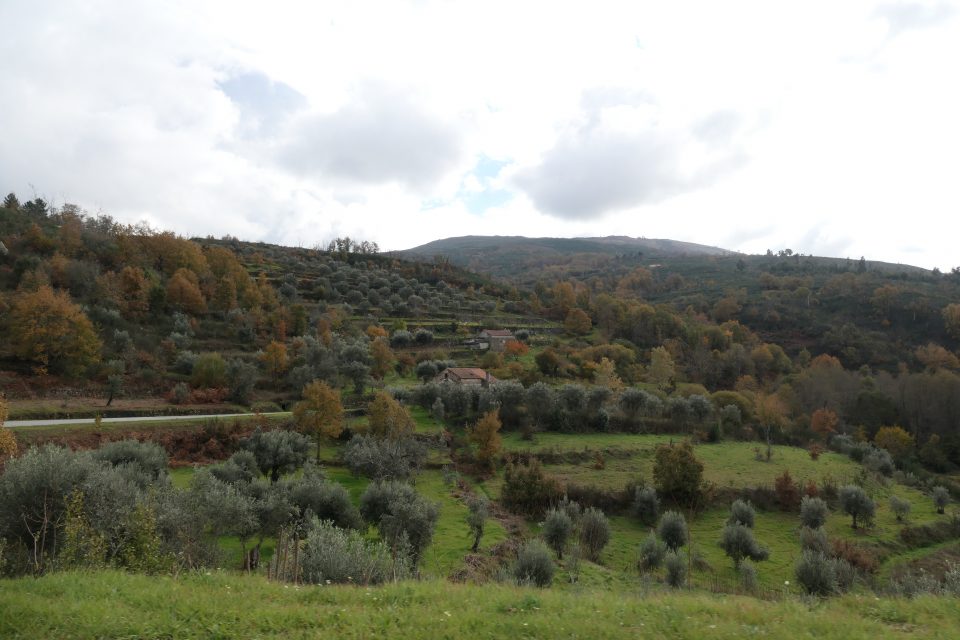
As we approached the village, we saw an amazing view. Folgosinho was perched high on a hill, again with a castle at its peak. The castle looked small but imposing.
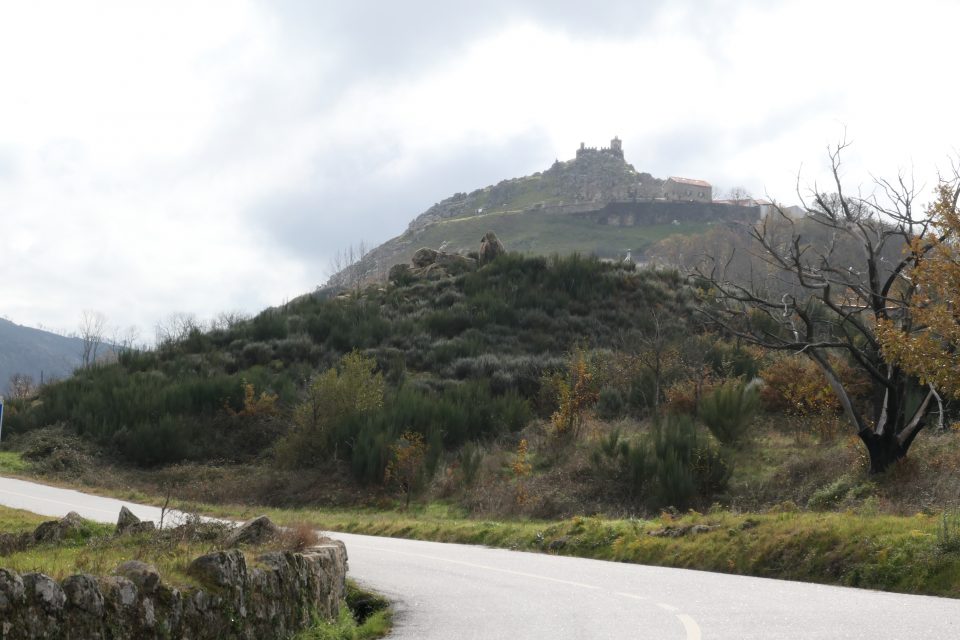
Folgosinho castle on the hilltop
Our car climbed the steep hill, we parked at the main square, and started to search. We walked in the direction of the castle, because we know now from our experience here, that the Jewish quarter was always near the castle. The Jews had the professions that the nobility needed – doctors, tradesmen, etc. – and kept them close. Right away we spotted the house from the first photo.
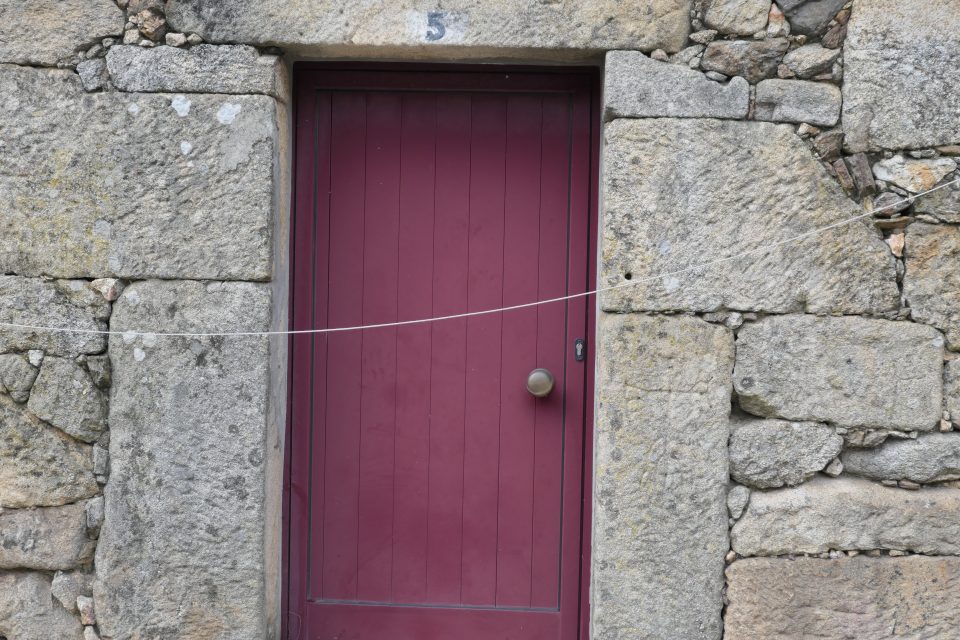
New Christian marking on the right side of the door
It was near the stairs to the castle. These were very unusual steps, made of quartz rock that glistened. The area has much quartz, some even in pink colors, and it was used to make the staircase. We climbed up and reached the top of the tower. Once again, the views were spectacular. The mountains to the east had a red tint, that comes from the quartz.
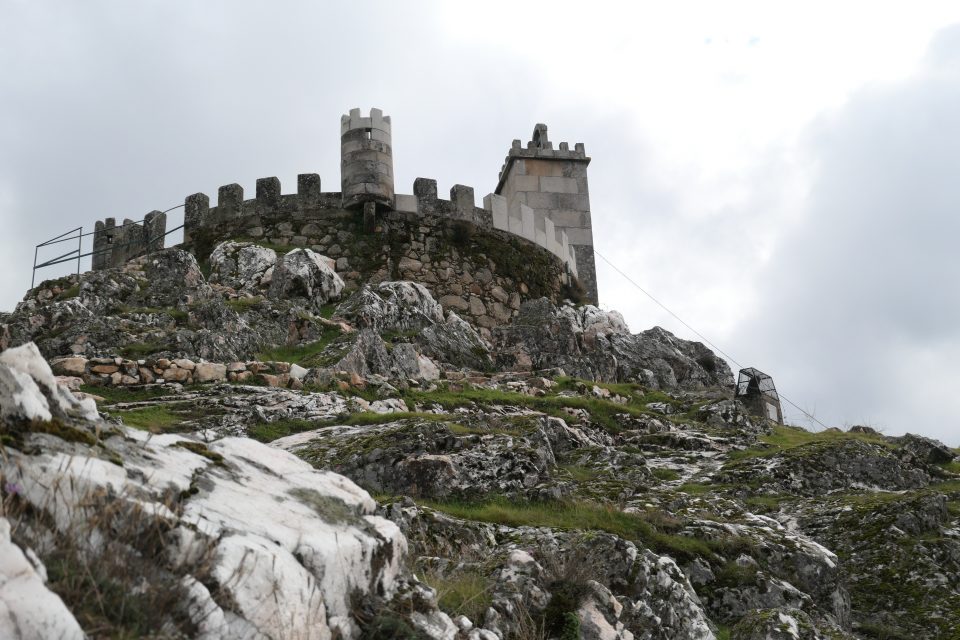
Looking up at the castle 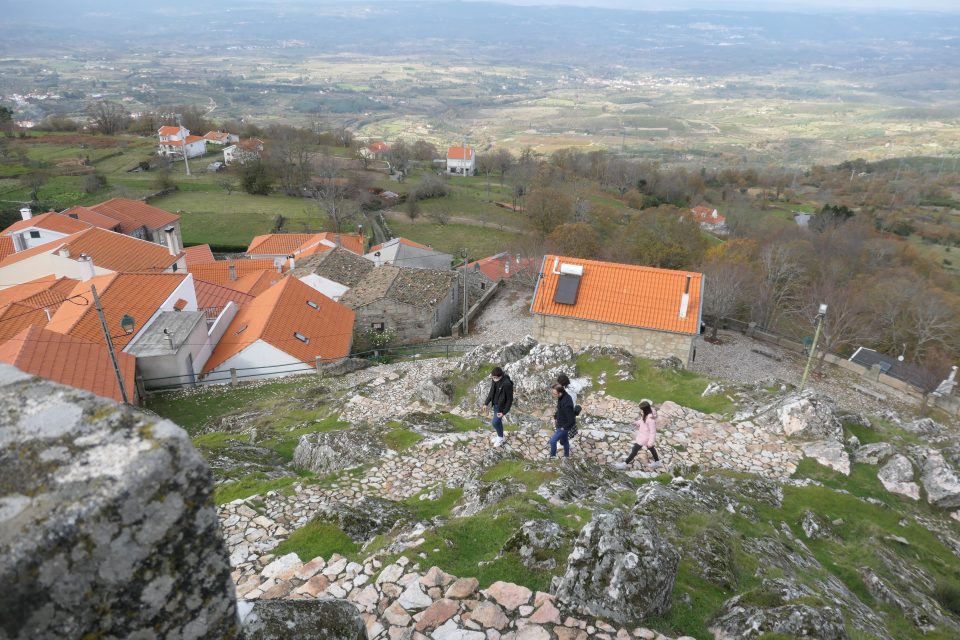
The quartz staircase leading up to the castle 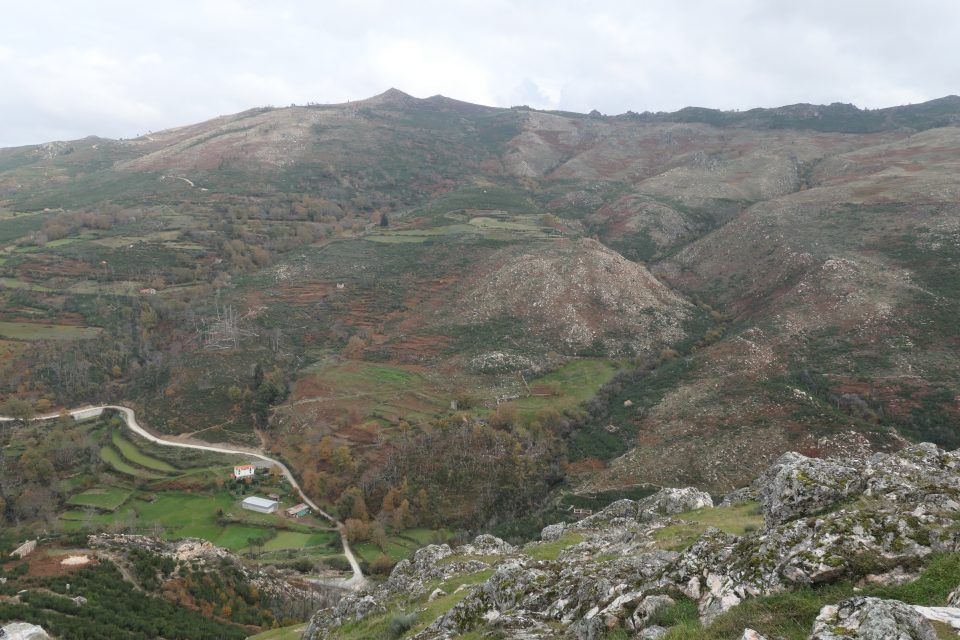
360-degree views from the castle 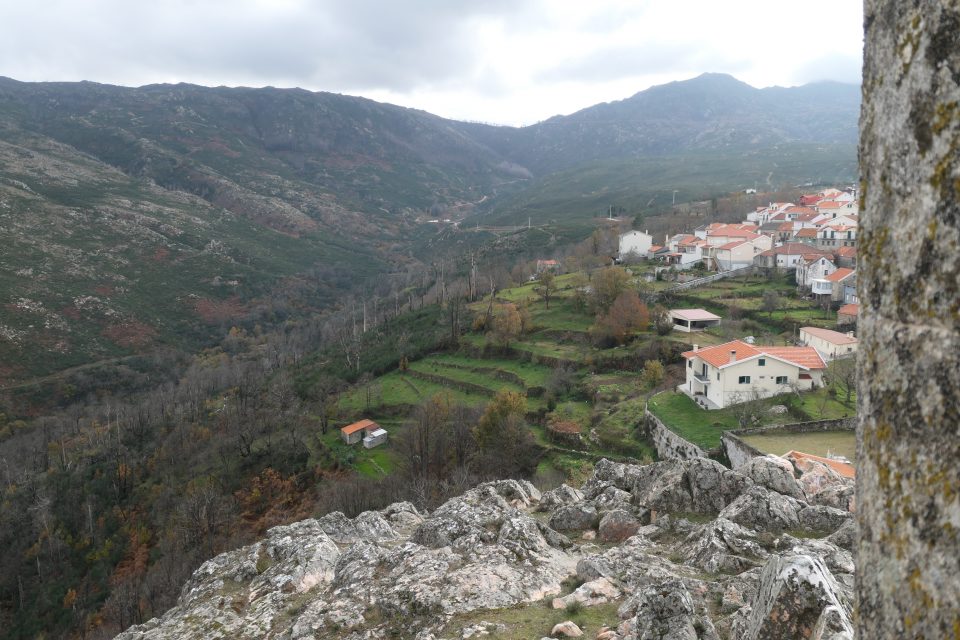
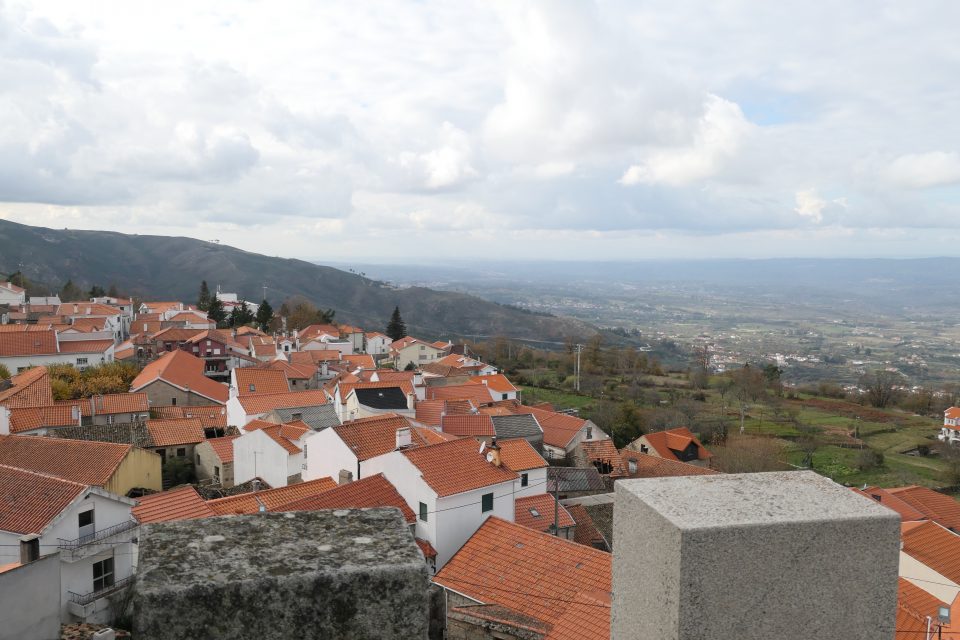
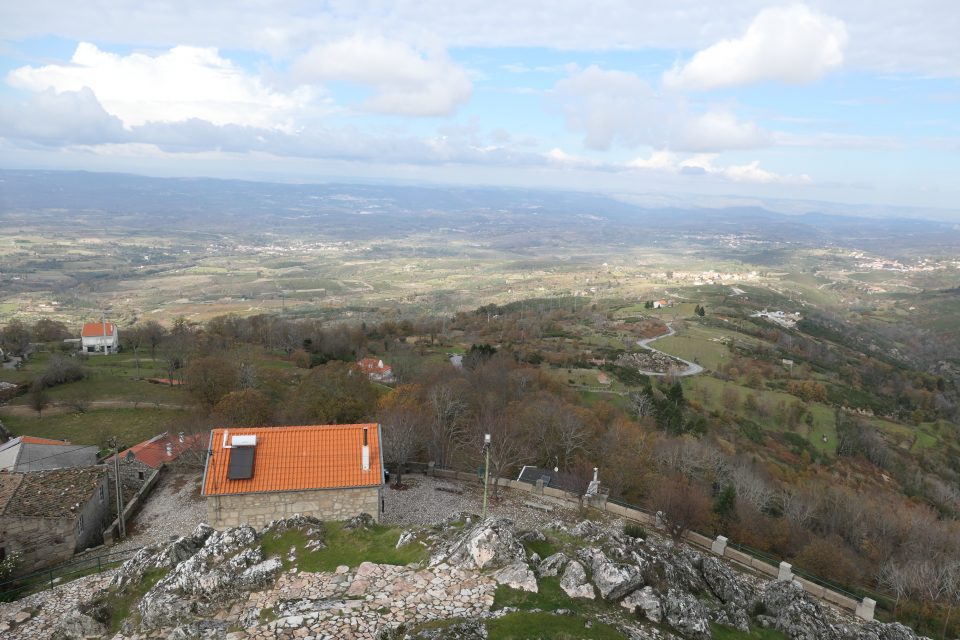
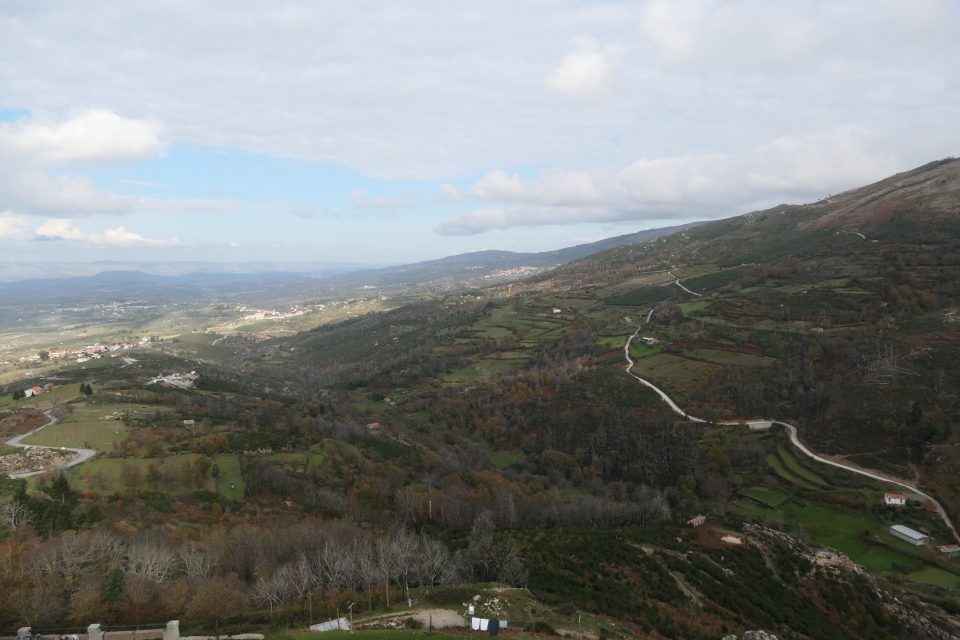
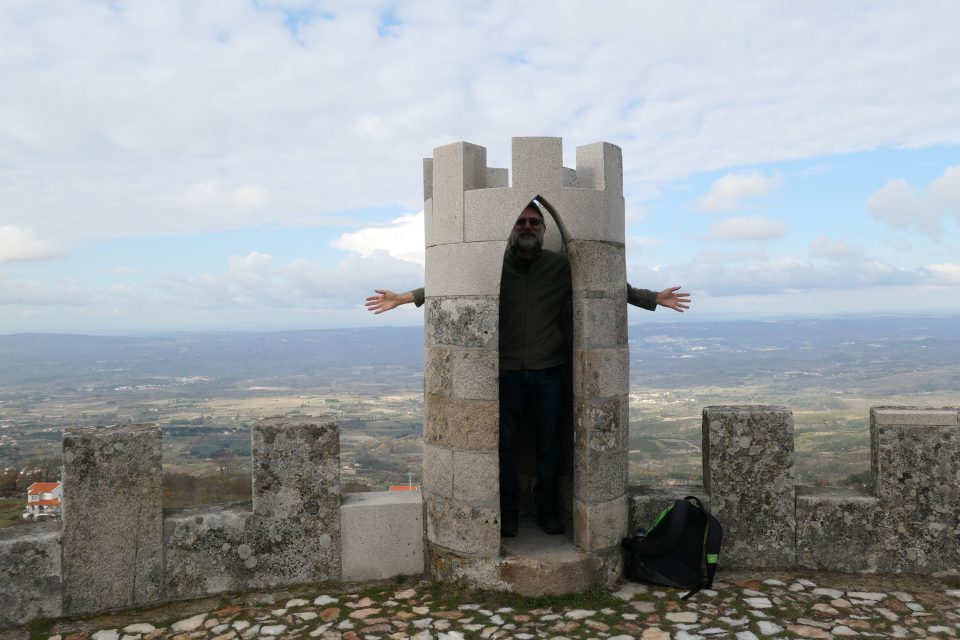
We climbed back down very slowly (down is still harder for me than up and the walking stick helps greatly) and resumed our search without any luck. One of the photos was of a street sign for Rua da Judaria. An old local woman walked past, and we showed her the photo. She pointed us in the right direction, and we found it. Two down and two to go.
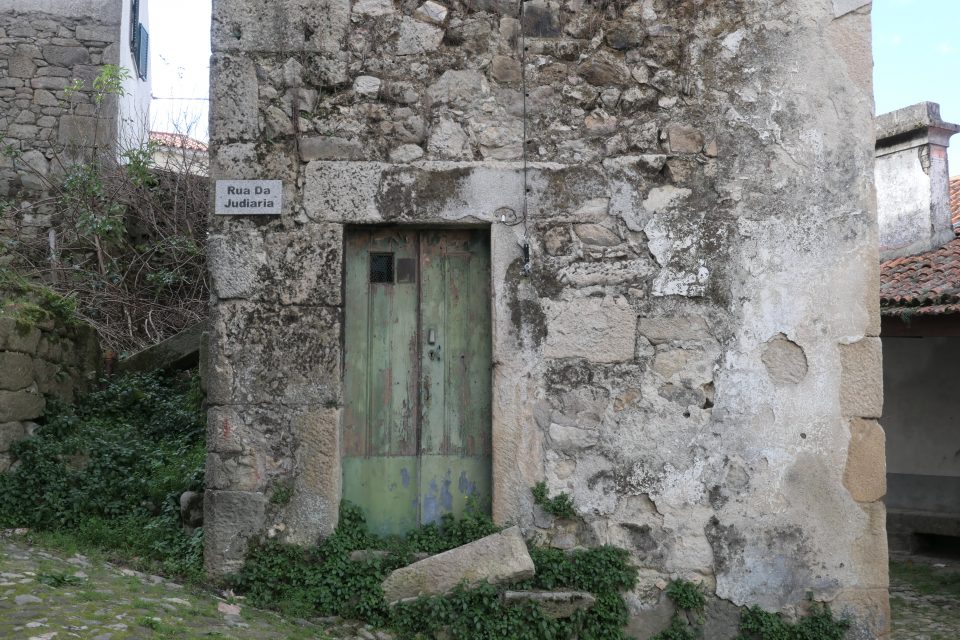
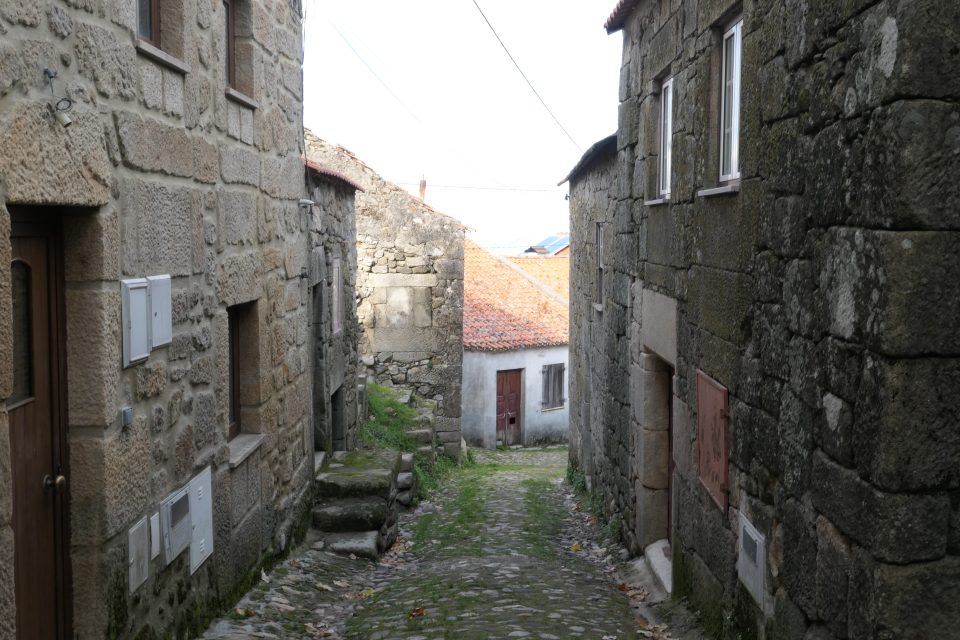
Rua da Judiaria
The last two photos were more evasive. However, in looking for them we found several additional houses with New Christian markings. One of the photos was of a Manueline window. Mark asked a group of locals standing in the square (there always seems to be a group of local older men hanging out in the main square) and they told him where to look. David found the house. Three down and several new locations. That was enough, time to continue.
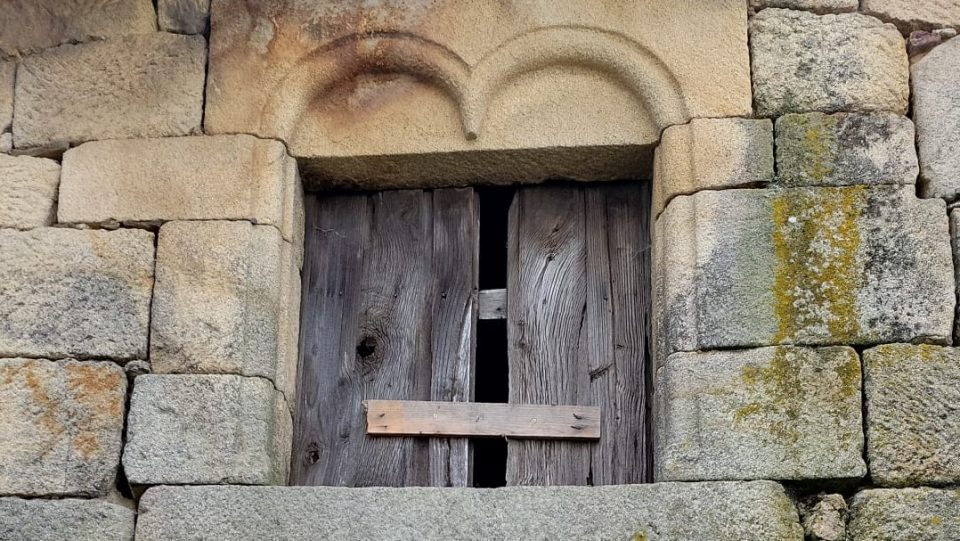
A Manueline window
Our next stop was to Gouveia, a large town at the foot of the mountains. In the middle ages, Gouveia had a Jewish community that was very involved in the wool trade. So far it had not rained, but we could see the rain clouds in the distance.
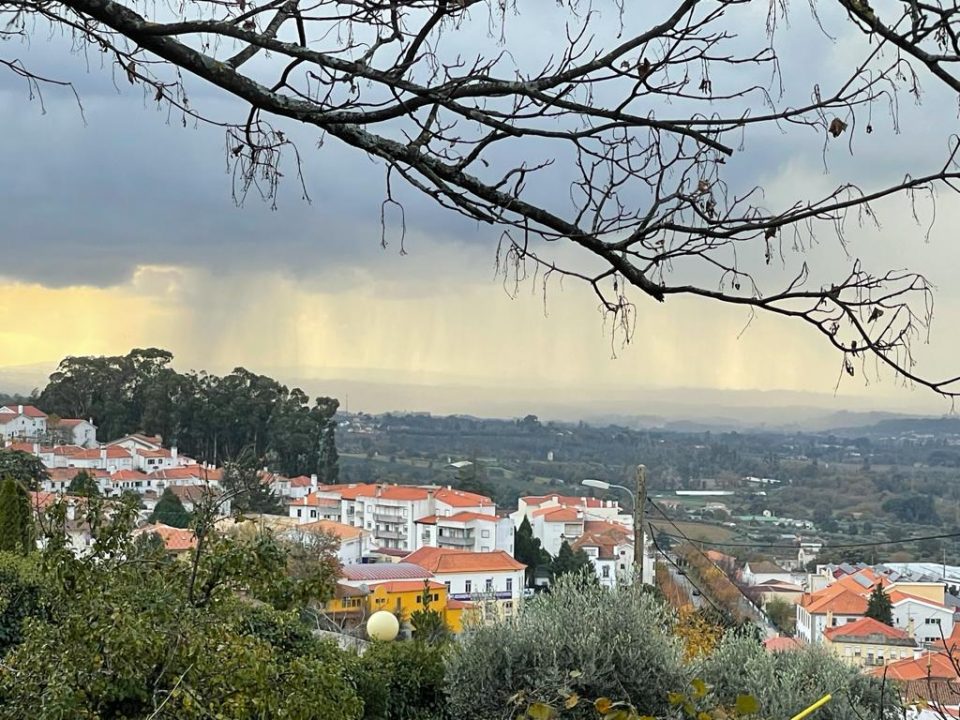
Rain in the distance 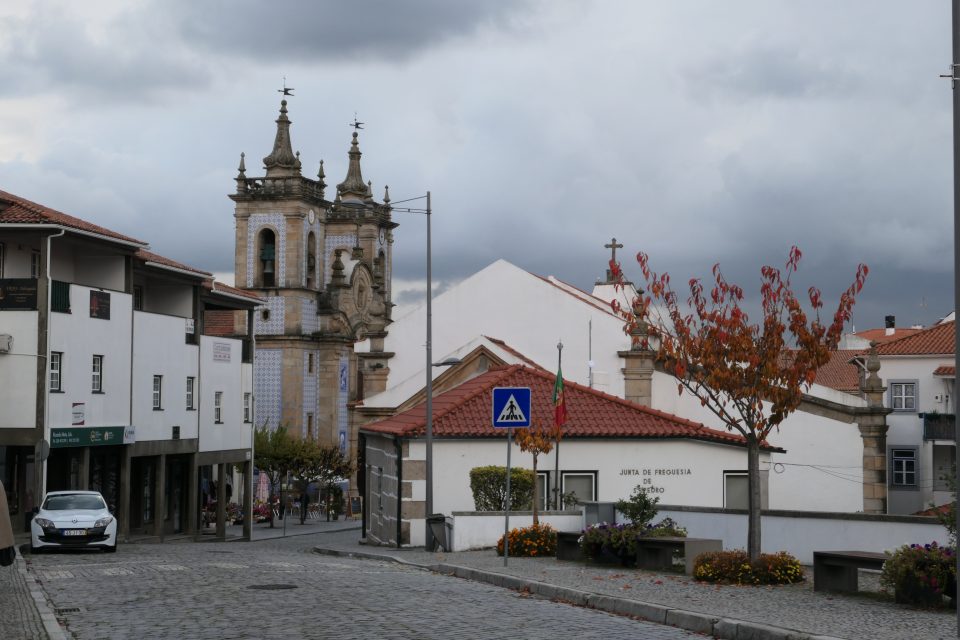
Historic Center of Gouveia
Our destination in Gouveia was the Espaço Arte e Memória (Art and Memory Space). While doing renovations on a house in the Jewish quarter of the town, a large stone with Hebrew writing was found. This stone is now displayed in the museum. Gouveia has several museums and we had a bit of trouble finding this one. Mark finally located it and we went in.
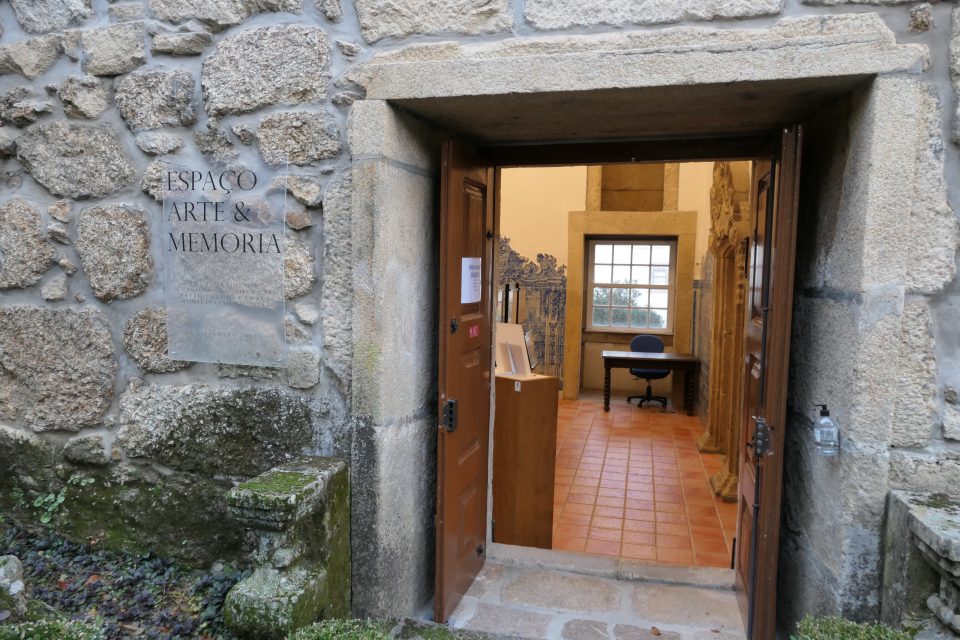
Entrance to Espaço Arte e Memória
The museum has one small main room with two smaller rooms on the sides. The main room is decorated with beautiful tiles. Entering the small room on the left, straight ahead is the Hebrew stone.
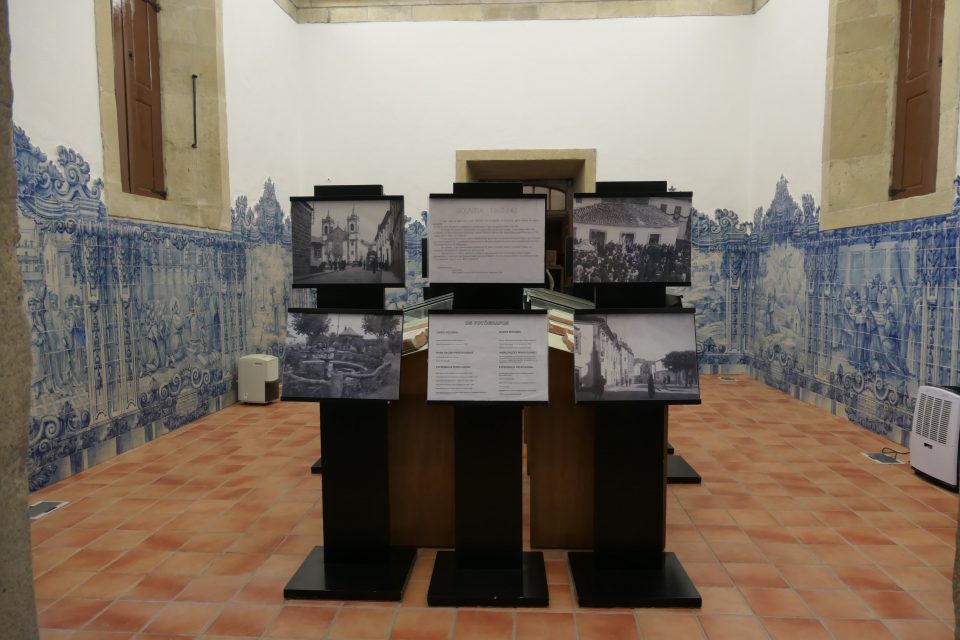
Inside the museum 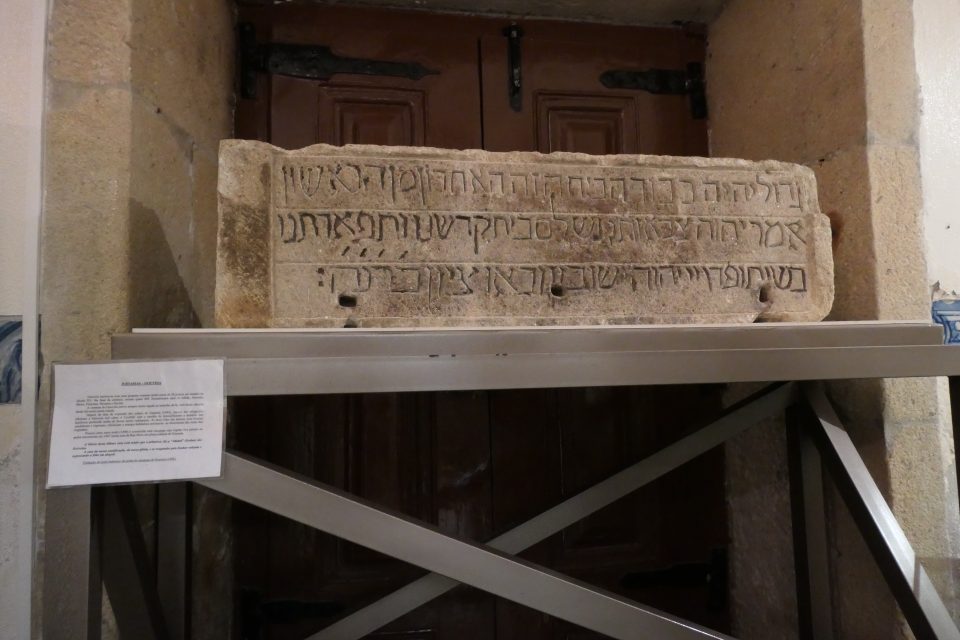
The Hebrew stone thought to be the door lintel of a synagogue
It is large and is thought to be the door lintel of the synagogue. The Hebrew is possible, but not easy to read. It translates as
“Adonai” (Lord) of hosts The house of our sanctification, of our glory, and those redeemed by the Lord will return and return to Zion in joy
As we left the museum, we heard thunder and saw lightening. It was time to head back to the car. The stone had been found in the historic part of the city, on Rua da Nova. We stopped there quickly to see if there are any traces left of the Jewish quarter there. The Rua da Nova was a very narrow lane, and almost all the houses had been renovated. There was nothing to be found.
We continued to our final destination, Seia, where we had an Airbnb for the night. It rained lightly. We reached our destination before the time I told the host we would be arriving, and waited in the car for ½ hour until someone showed up to check us in.
Once in, all was good. It was a very large apartment with plenty of room. We participated in our weekly family Zoom, and did what has become now routine – made dinner and spent the evening on our computers.
Today, we crossed the mountains on the northern route, tomorrow we are returning across the mountains on the southern route, passing the highest point in Portugal. It is supposed to rain and snow. Something to worry about. Good night.

